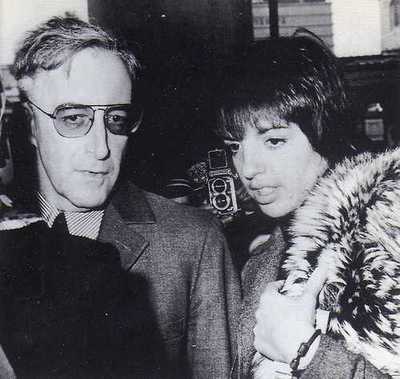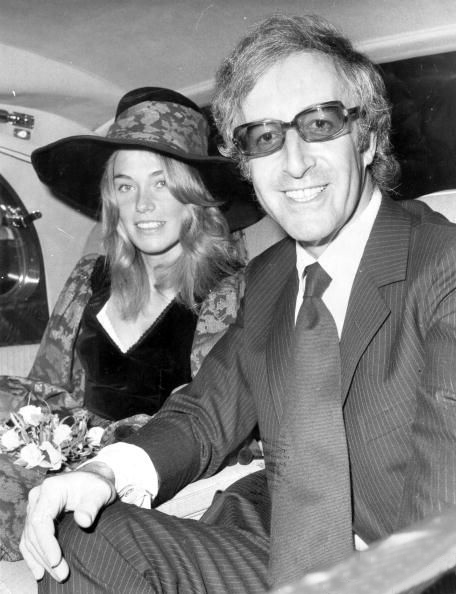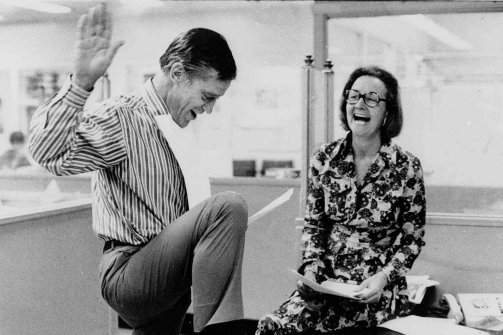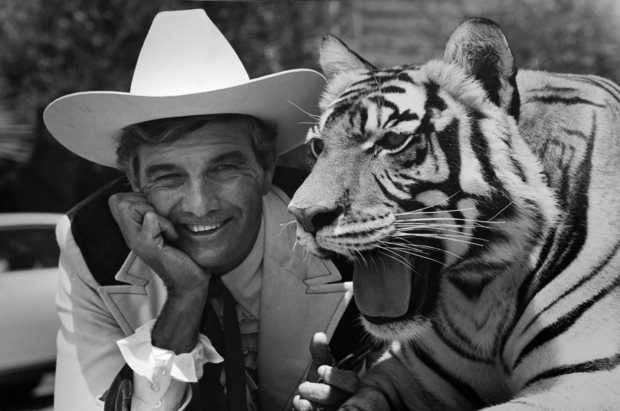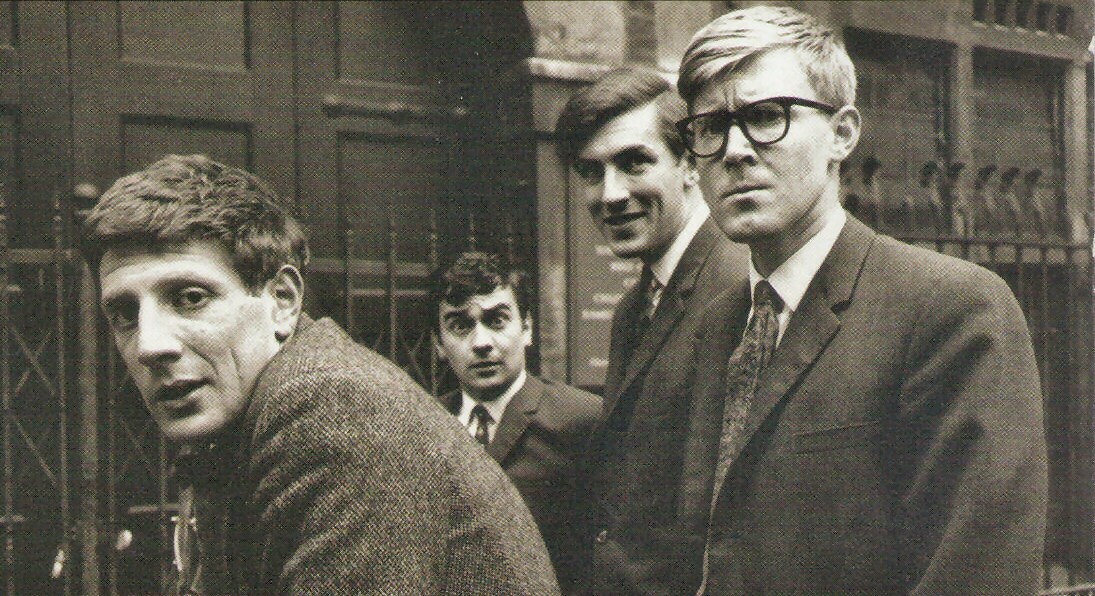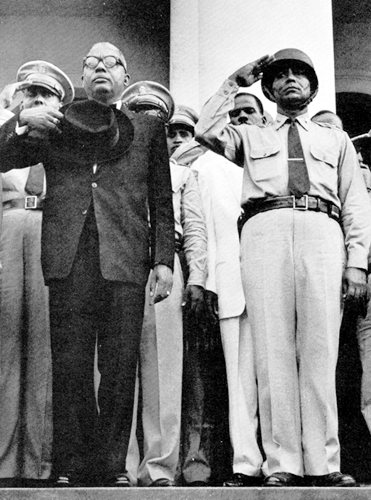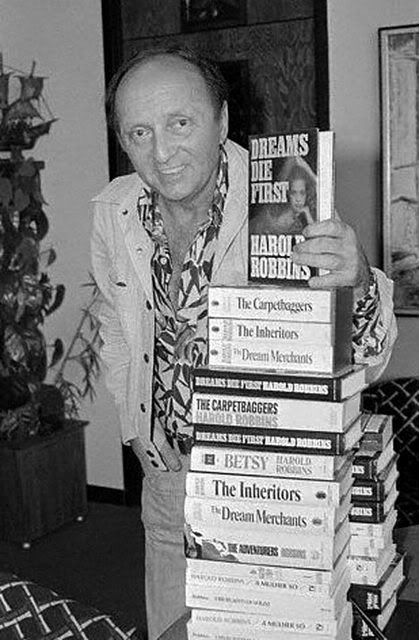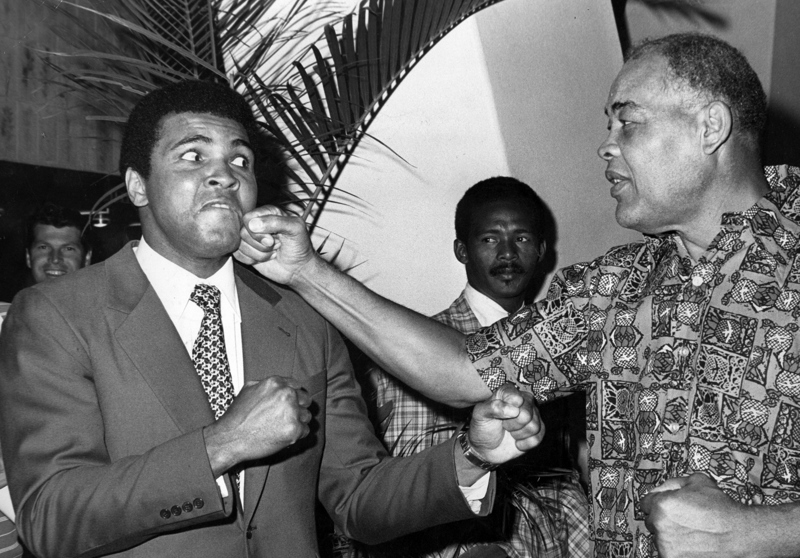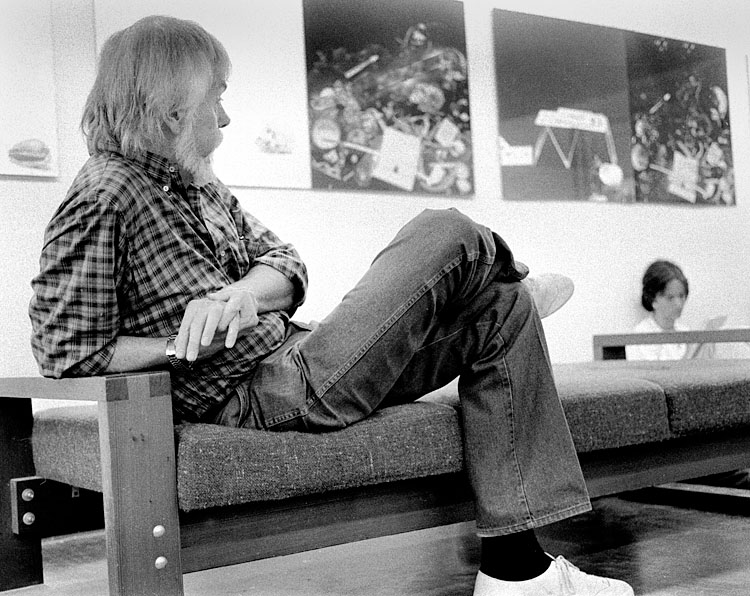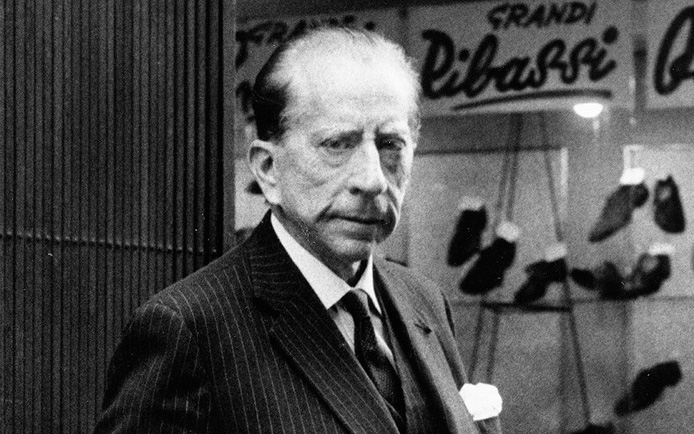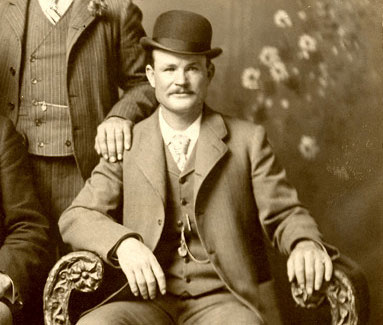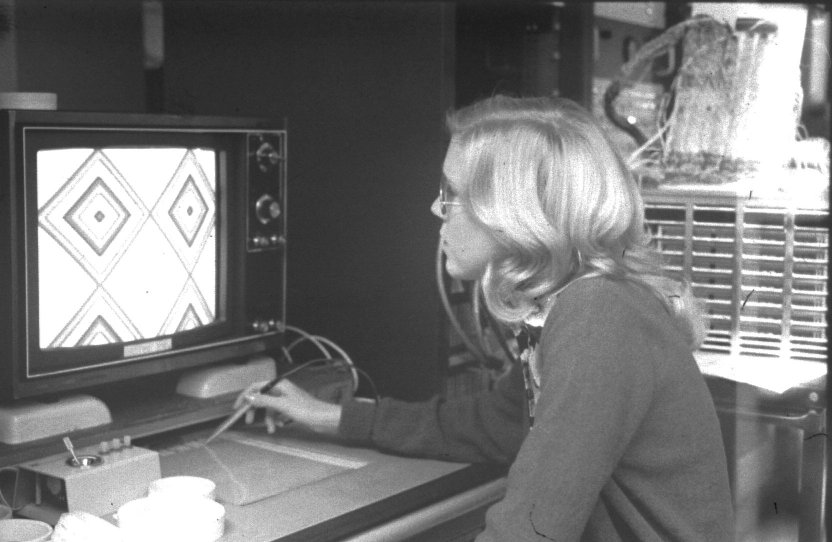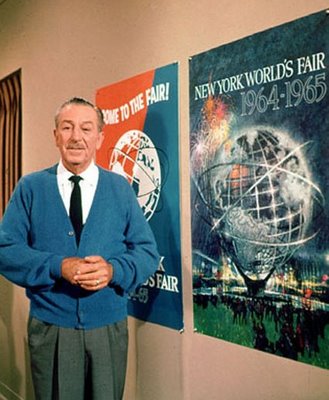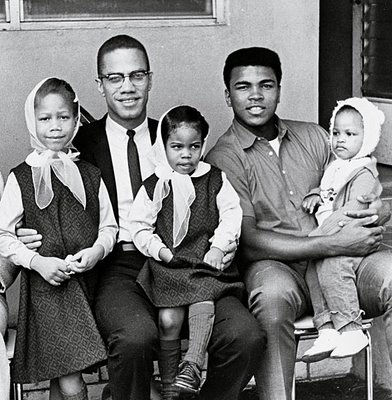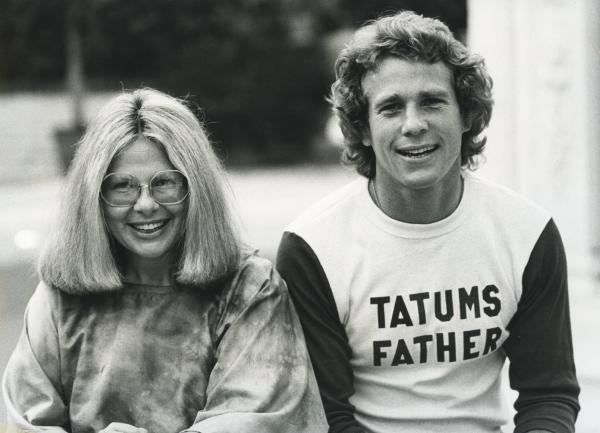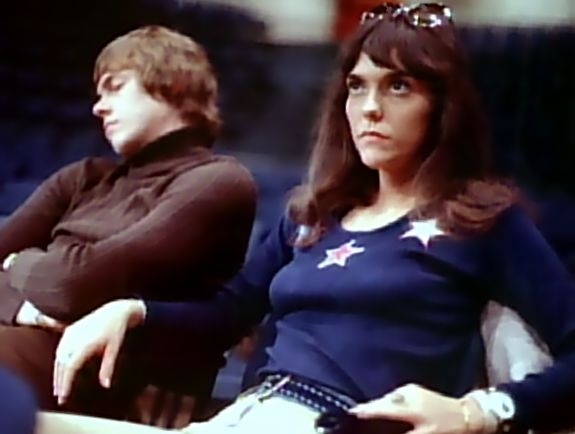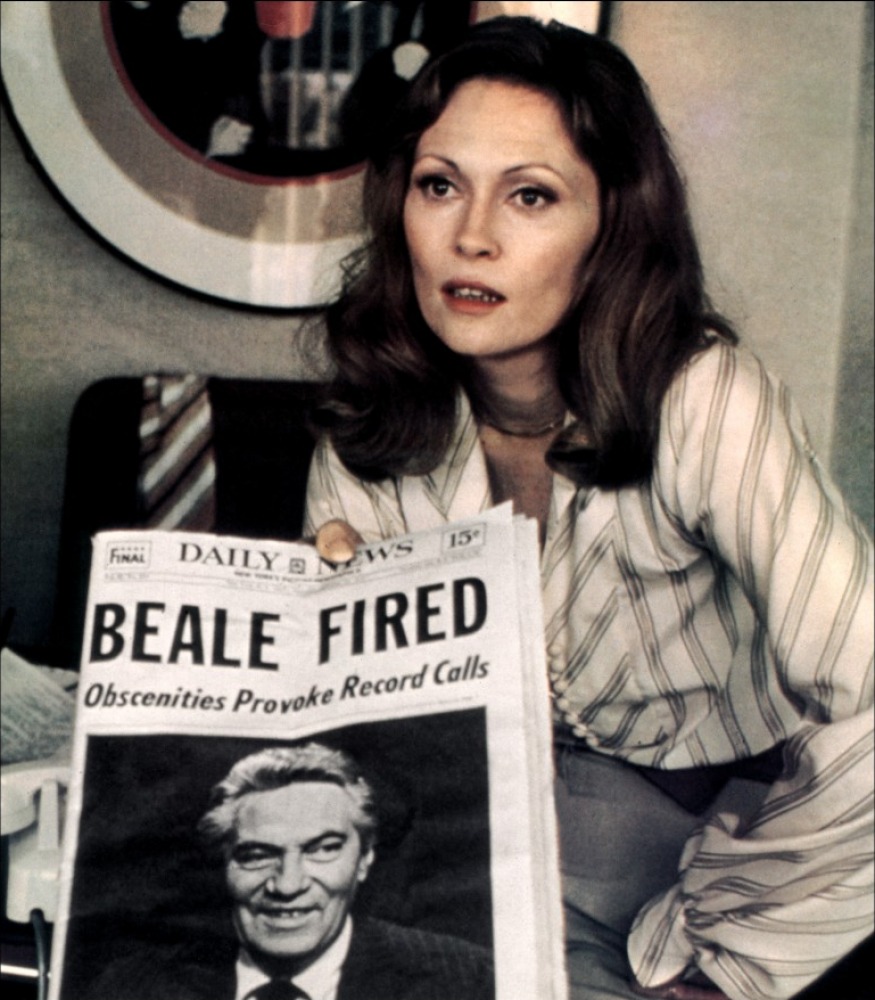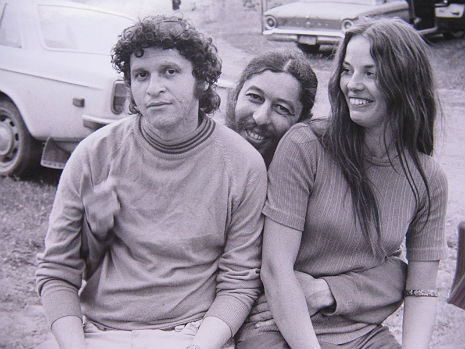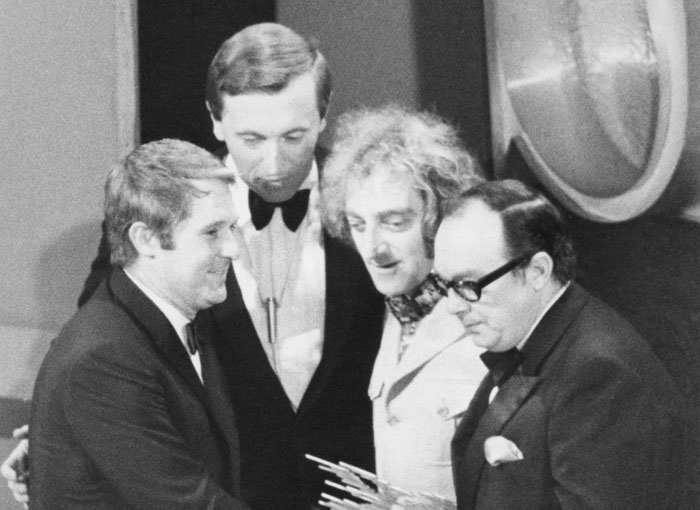Almost as amusing as Peter Seller’s buffoonish international playboy character was his enthusiastic Scotsman, which was also used to sell TWA in the 1970s.
You are currently browsing the archive for the Videos category.
Tags: Peter Sellers
If your dreams come true, you better have dreamed wisely. Working class Viv Nicholson won millions in a football pool in 1961 and found herself isolated the way billionaires sometimes are. Did she spend, spend, spend herself back into modest financial means because of a poor foundation in economics or was she driven by survival instincts?
From a 1966 interview with Nicholson by Alan Whicker:
Tags: Alan Whicker, Viv Nicholson
Tags: Peter Sellers
Cal Worthington, legendary West Coast car salesman and innovative pitchman, just passed away at 92. The opening of his Los Angeles Times obituary penned by Martin Miller:
“Cal Worthington, the Oklahoma native whose old-time carnival flair built one of the most successful car dealerships west of the Mississippi, has died. He was 92.
Worthington died Sunday while watching football at his home on the Big W Ranch near Orland, Calif., said Brady McLeod of the Miles Law Firm in Sacramento, which represented Worthington.
Described as a cross between Dale Carnegie and Slim Pickens, Worthington was best known for his wacky television pitches that had him wrestling with a tiger, flying upside down on an airplane wing or riding a killer whale. His sales antics with his ‘Dog Spot’ drove a career that took him from a three-car lot on a patch of Texas dirt to a multi-make dealership empire that grossed billions of dollars and stretched from Southern California to Alaska.
In 1950, Worthington bought a car dealership in Huntington Park and in the years that followed began to use his down-home theatrical style to drum up more business.
Worthington’s enduring mark on regional television wasn’t made until 1971, when he began running his famous ‘Dog Spot’ commercials. The ads were inspired by two competitors, Ralph Williams and Fletcher Jones, who both ran television ads featuring dogs. In particular, Jones was shown cuddling puppies and promised he’d give customers a dog from the pound.
‘I decided I’d mimic them,’ Worthington told the Los Angeles Times in 2002. So he borrowed a gorilla, chained it to a car bumper and let the cameras roll. With the ape snarling in the background, Worthington said: ‘Howdy, I’m Cal Worthington and this is my dog Spot. I found this little fella down at the pound, and he’s so full of love.'”
••••••••••
Cal and his “dog”:
Soupy Sales spoofs him as “Cal Nothington”:
Tags: Cal Worthington, Martin Miller, Soupy Sales
Beyond the Fringe, the 1961 comedy revue created by and starring Peter Cook, Dudley Moore, Alan Bennett and Jonathan Miller, is a particular favorite of Lorne Michaels, and it’s easy to see why. The show was a watershed moment in the development of modern satire, in a time before Second City and other such groups were established. I mean, the Beatles hadn’t even hired Ringo yet. This video records the final production of the original run, which stretched from Edinburgh to London’s West End to Broadway.
Tags: Alan Bennett, Dudley Moore, Jonathan Miller, Lorne Michaels, Peter Cook
In 1985, Merv Griffin was visited by J.Z. Knight, who’s long made a good living by pretending that she could channel Ramtha, a 35,000 year-old spiritual guide given to twisty, Yoda-ish pronouncements. She “summons” the “entity” at around the ten-minute mark, and it’s fairly clear how even someone as cerebral as Linda Evans could have become a true believer.
Tags: J.Z. Knight, Merv Griffin, Ramtha
Alan Whicker’s mesmerizing 1969 film about Haiti’s witch doctor of a dictator, François “Papa Doc” Duvalier.
I used to have the complete version of Alan Whicker’s 1971 documentary about the wet-dream merchant Harold Robbins on the site until it was removed from Youtube. But even just the opening posted below is worth watching, with the trashy author making his way through his childhood neighborhood, Hell’s Kitchen, during New York City’s bad old days. Robbins, who was the best-selling novelist in the world at the time, specialized in literature that was most suitable for the beach or masturbation, though preferably not both at the same time.
Muhammad Ali and Joe Louis seldom had a good word for each other–“Slow Joe Louis” was one of the nicer things Ali called his predecessor—and it wasn’t just joking. Louis picked Sonny Liston to win both Ali-Liston fights, and Ali never really forgave him. Louis seemed to be jealous of the brash younger fighter who was set to eclipse him.
This 1966 clip captures the two heavyweight egos when the men were actually working together briefly, with Louis acting in an adviser capacity. But Ali’s stance on the Vietnam war, among other issues, soon led to a bitter falling out.
Tags: Joe Louis, Muhammad Ali
The opening of Julie Belcove’s Financial Times article about the contrarian conceptualist John Baldessari, who is trying, in his own way, to undo what the art world has done:
“In an age when contemporary art is very big business, and works by even living artists can command eight-figure prices at auction, John Baldessari is unafraid to poke a little fun at the art-industrial complex. The California-based conceptual master’s most recently completed body of work – a send-up of art history’s canon – takes a jab at the art world’s appetite for household names and easily identifiable visuals.
There is, for instance, an image of a soup can, a classic Warhol motif, but done in blue instead of Campbell’s red, without the label’s familiar logo, emphasising instead the can’s clean, minimalist, geometric shapes favoured by Sol LeWitt, whose name is printed underneath. Another piece takes a detail of a Jackson Pollock gestural abstraction but renders it in Matisse’s trademark yellow and blue and labels it with the latter artist’s name.
‘I was getting mildly irritated by artists getting branded – ‘This is a Warhol,’ ‘This is a de Kooning’ – and you don’t even look. It just has to look like a brand,’ says Baldessari, in fine fettle at 82 years old, on a warm summer afternoon at Marian Goodman Gallery, his New York dealer. ‘And I said, I wonder if I can slow that down.'”
••••••••••
“A Brief History of John Baldessari,” narrated by Tom Waits:
“1970: Baldessari destroying his paintings”:
Tags: John Baldessari, Tom Waits
Speaking of wealthy eccentrics, the Messy Ness Chic blog has a story about the former home of the late Girard B. Henderson, a longtime Avon bigwig who in 1978 built a 16,000-square-foot abode 25 feet below ground in Las Vegas. Like a lot of folks in the Cold War days, Henderson feared his family would disappear into a mushroom cloud–but no mere fallout shelter would do for them. He created a bunkered McMansion, replete with soundstage scenery, a swimming pool and putting green. (It’s currently on the market.)
Henderson had experience in subterranean endeavors having sponsored in 1964 the Underground Living exhibit at New York World’s Fair. He also in 1950 founded one of America’s first cable TV companies (which brought the service, of course, underground). Unsurprisingly, he kept details about his private life buried. The opening of a paywalled 1966 Time article about him and a video about the house follow.
Girard Brown Henderson, a director of Avon Products, Inc., owes his wealth to the cosmetics firm’s cheery, door-to-door sales technique, but he is not the kind of fellow that a stranger comes calling on. A 5-ft. 6-in., onetime barnstorming pilot, Henderson at 61 is one of the richest men in the U.S., and one of the most secretive. Though he has interests in half a dozen businesses ranging from investment companies to a community antenna television outfit in California and is a member of the New York Stock Exchange, he is rarely seen at his Wall Street office.•
_____________________________
“All these trees are faux trees obviously”:
Tags: Girard Brown Henderson
Apart from money, J. Paul Getty wasn’t a very rich man. A billionaire in a time when such things were unheard of, Getty was a strange and miserly sort with five marriages and a procession of troubled heirs. In this 1970s commercial, the industrialist spoke on behalf of E.F. Hutton, the brokerage firm that was swallowed in a series of mergers beginning in the 1980s.
The jaw-dropping tale of the 1973 kidnapping of Getty’s grandson, from the heir’s 2011 New York Times obituary:
“J. Paul Getty III, who was a grandson of the oil baron once believed to be the richest man in the world and who achieved tragic notoriety in 1973 when he was kidnapped by Italian gangsters, died Saturday at his home near London. He was 54.
His son, the actor Balthazar Getty, confirmed the death in a statement relayed in an e-mail from Laura Hozempa, one of his agents. Mr. Getty had been wheelchair-bound since 1981, when a drug overdose caused him to have a stroke that left him severely paralyzed, unable to speak and partly blind.
At the time of his abduction, Mr. Getty was just 16 and living on his own in Rome, where his father, J. Paul Getty II, had, for a time, helped oversee the family’s Italian business interests.
Expelled from a private school, the young Mr. Getty was living a bohemian life, frequenting nightclubs, taking part in left-wing demonstrations and reportedly earning a living making jewelry, selling paintings and acting as an extra in movies. He disappeared on July 10, 1973, and two days later his mother, Gail Harris, received a ransom request. No longer married, she said she had little money.
‘Get it from London,’ she was reportedly told over the phone, a reference either to her former father-in-law, J. Paul Getty, the billionaire founder of the Getty Oil Company, or her former husband, who lived in England.
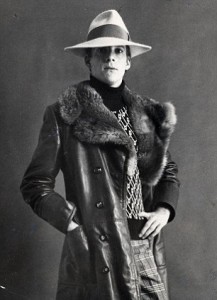 The amount demanded was about $17 million, but the police were initially skeptical of the kidnapping claim, even after Ms. Harris received a plaintive letter from her son, and a phone call in which a man saying he was a kidnapper offered to send her a severed finger as proof he was still alive. Investigators suspected a possible hoax or an attempt by the young Mr. Getty to squeeze some money from his notoriously penurious relatives.
The amount demanded was about $17 million, but the police were initially skeptical of the kidnapping claim, even after Ms. Harris received a plaintive letter from her son, and a phone call in which a man saying he was a kidnapper offered to send her a severed finger as proof he was still alive. Investigators suspected a possible hoax or an attempt by the young Mr. Getty to squeeze some money from his notoriously penurious relatives.
‘Dear Mummy,’ his note began, ‘Since Monday I have fallen into the hands of kidnappers. Don’t let me be killed.’
The eldest Mr. Getty refused to pay the kidnappers anything, declaring that he had 14 grandchildren and ‘If I pay one penny now, I’ll have 14 kidnapped grandchildren.’ His son said he could not afford to pay.
Three months after the abduction, the kidnappers, who turned out to be Calabrian bandits with a possible connection to organized crime, cut off Mr. Getty’s ear and mailed it, along with a lock of his hair, to a Roman newspaper. Photographs of the maimed Mr. Getty, along with a letter in which he pleaded with his family to pay his captors, subsequently appeared in another newspaper. Eventually the kidnappers reduced their demands to around $3 million. According to the 1995 book Painfully Rich: The Outrageous Fortune and Misfortunes of the Heirs of J. Paul Getty, by John Pearson, the eldest Mr. Getty paid $2.2 million, the maximum that his accountants said would be tax-deductible. The boy’s father paid the rest, though he had borrow it from his father — at 4 percent interest.
The teenager, malnourished, bruised and missing an ear, was released on Dec. 15; he was found at an abandoned service station, shivering in a driving rainstorm.”
Tags: J. Paul Getty, J. Paul Getty III
Alan Whicker interviews Lula Parker Betenson, the 94-year-old sister of Western outlaw Butch Cassidy, in 1978, two years before her death. This line about Cassidy’s devout Mormon ancestors stays with me: “Drawn towards the mecca of their religion, they sailed from Liverpool in 1856 and walked the 1300 miles from Iowa to Salt Lake City.”
A SpaceX video modestly called “The Future of Design,” in which Elon Musk, sans stylus and mouse, relies on Tony Stark-style gestures.
Tags: Elon Musk
Jack Benny is one of my favorite comedians, and I think his odd, long-running radio and TV sitcom, with its scheming cast of characters, was the template in some ways for Seinfeld. Sadly the episode tapes of the TV version are in poor condition so the program never became a rerun staple on cable. In this 1964 clip from near the end of the show’s run, the host is joined by Walt Disney, empire builder, urban planner, technologist, Wernher von Braun collaborator and mouse enthusiast.
Tags: Jack Benny, Walt Disney
In this 1965 TV meeting with female members of the press, Muhammad Ali discusses Malcolm X’s estrangement from Elijah Muhammad’s brand of Islam. That means it had to have been recorded somewhere from January 1 to February 20 because the minister and activist was murdered on February 21 of that year.
Tags: Elijah Muhammad, Malcolm X, Muhammad Ali
On his new ESPN show, Keith Olbermann just interviewed author David Epstein, whose book, The Sports Gene, I blogged about earlier in the week. In this segment, he explains the two-fold reason why Jamaica turns out the world’s greatest sprinters.
Tags: David Epstein, Keith Olbermann
A 1975 60 Minutes portrait by Mike Wallace of the late Hollywood agent Sue Mengers, which is likewise a portrait of that brief, fascinating era in between the Studio System’s collapse and the rise of the blockbuster. There’s an extended sequence with Robert Evans.
Tags: Mike Wallace, Robert Evans, Sue Mengers
David Frost was mocked as a lightweight outsider by mainstream media when in 1977 he purchased an interview with Richard Nixon, especially excoriated by Mike Wallace the week before it was to air. But he ultimately checkmated the disgraced former President in a contest that was even higher stakes than Fischer-Spassky.
From a colorful Hollywood Reporter essay about the colorful Frost by former girlfriend Caroline Cushing Graham, who was with him during the momentous interviews and was played by Rebecca Hall in the Ron Howard adaptation of Peter Morgan’s play:
In 1975 David and I traveled to Florida for a series of The Guinness Book of World Record shows he hosted. One was about the fattest man, the sword swallower, and another about a post office built for small people. The human bomb blew himself up for the camera, he had added an extra stick of dynamite to impress David. We were impressed and horrified by the effort – that was a typical Frost program.
In February 1977 David asked me to come to Beverly Hills, where he was preparing for the historic interviews with Richard Nixon. At the time there was anxiety and money needed, and ads to be sold to pay for the cable TV channel airing the interviews. In the Beverly Hilton, a group of famous journalists were researching questions with David, along with our good friend and advisor Clay Felker, founder of New York and New West magazines.
David worked himself to the bone in Beverly Hills, with a painful root canal emergency done a few days before the Laguna Beach interviews. I accompanied David with the team down south to Laguna, he did not drive, contrary to the Frost/Nixon movie. As David prepared to interview Richard Nixon, I made the sandwiches for their lunch. When the last days’ interview was over, there were 28 hours of interviews, Nixon invited us for drinks at the Western White House. Diane Sawyer accompanied us to a private room for cocktails. Nixon asked me if I liked good wine, as he was proud of his cellar. Driving away that evening I felt sorry for Nixon, he was so lonely and we were going to a party at Ma Maison, where Sammy Kahn was performing.
Nixon had said to David, as we posed for a photograph with him: “Marry that girl, she lives in Monte Carlo.” David laughed at Nixon’s remark and it became a standing joke between us – he used it in his book I Gave Them a Sword. As we returned to Beverly Hills David was anxious to meet with his team and get their reaction to the interviews before we went out to dinner.”•
From a later Frost special for the Guinness Book of World Records:
Tags: Caroline Cushing Graham, Clay Felker, David Frost, Diane Sawyer, Richard M. Nixon, Sammy Kahn
Few programs in TV history caused as much discomfort and cringing as Ralph Edwards’ long-running show, This Is Your Life, in which the seemingly oblivious host forced sad people in entertainment to relive the pasts they got into show business to forget. I mean, that’s why they were in an industry driven by fantasy. Through the years, he mortified Stan Laurel, Lowell Thomas, Buster Keaton and Frances Farmer, to name just a few.
But what’s done is done, and I guess it can’t hurt to post an old episode. In this 1971 show, Herb Alpert helps Edwards stalk musical duo Richard and Karen Carpenter, the latter of whom had enough pain all by herself for a trio or quartet.
Tags: Herb Alpert, Karen Carpenter, Ralph Edwards, Richard Carpenter
I’m sure Faye Dunaway is every bit as difficult as advertised, but where would I be without Bonnie and Clyde and Chinatown and Network? Here she is in two commercials, one from the 1960s in which she plays a mommie dearest for Thrill detergent and the other a 1980s spot which has her peeling and eating a hard-boiled egg for Japan’s Parco shopping center.
Tags: Faye Dunaway
Boxing was once the champion of American sports, but when growing knowledge turned “punchy” into “brain damaged,” the talent pool dried up and the pastime became marginalized. Malcolm Gladwell has been predicting for a couple of years that the same downturn will befall football, a sport in which no amount of padding can stop concussions. He repeats those sentiments in the new documentary, The United States of Football. From Fox Sports:
“Author Malcolm Gladwell has been a voice in the concussion fray before, calling schools to ban college football and saying he wouldn’t be surprised if football at all levels fades from existence once people realize how damaging it can be long-term for players with head injuries.
But in a new documentary, Gladwell offers a less extreme — and possibly more likely — scenario for what will happen to the game. Gladwell says football will be a game that capitalizes on those poor or desperate enough to take the risk.
‘We will go to a middle position where we will disclose the risks and essentially dare people to play,’ Gladwell said in the film, which comes out Friday, as reported by CBSSports.com. ‘… That’s what the Army does. So we leave the Army for kids who have no other options, for whom the risks are acceptable. That’s what football is going to become. It’s going to become the Army. That’s a very, very different situation.
‘That’s a ghettoized sport, not a mainstream American sport.'”
••••••••••
Tags: Malcolm Gladwell
Original shock jock Joe Pyne, who interviewed satanists and pimps and, yes, even lawyers, had a testy exchange with Merry Prankster and founding Yippie Paul Krassner in 1967. The guest’s running buddy Jerry Rubin once stormed off the same show.
Tags: Joe Pyne, Paul Krassner
Tags: David Frost, Marty Feldman

